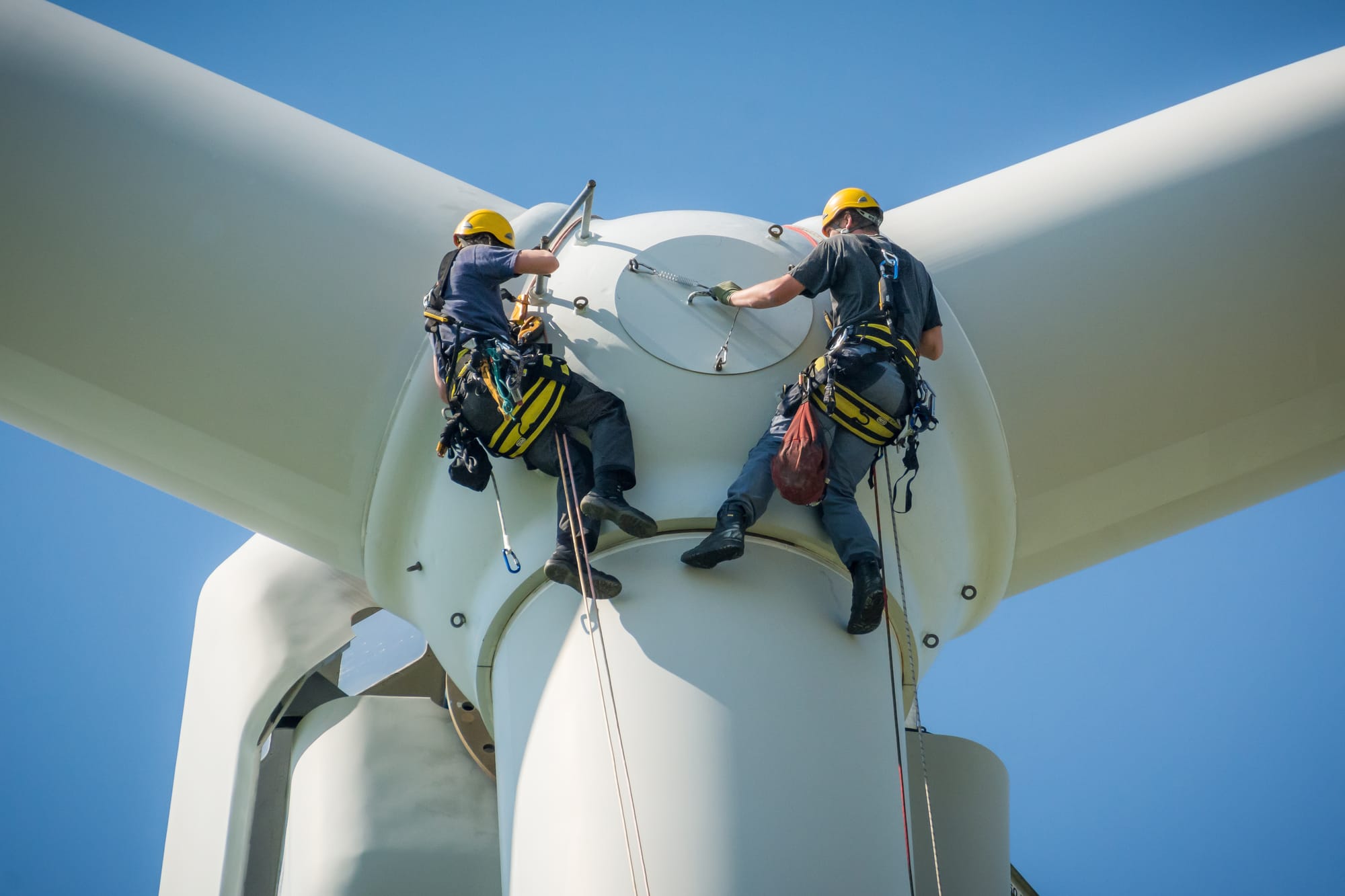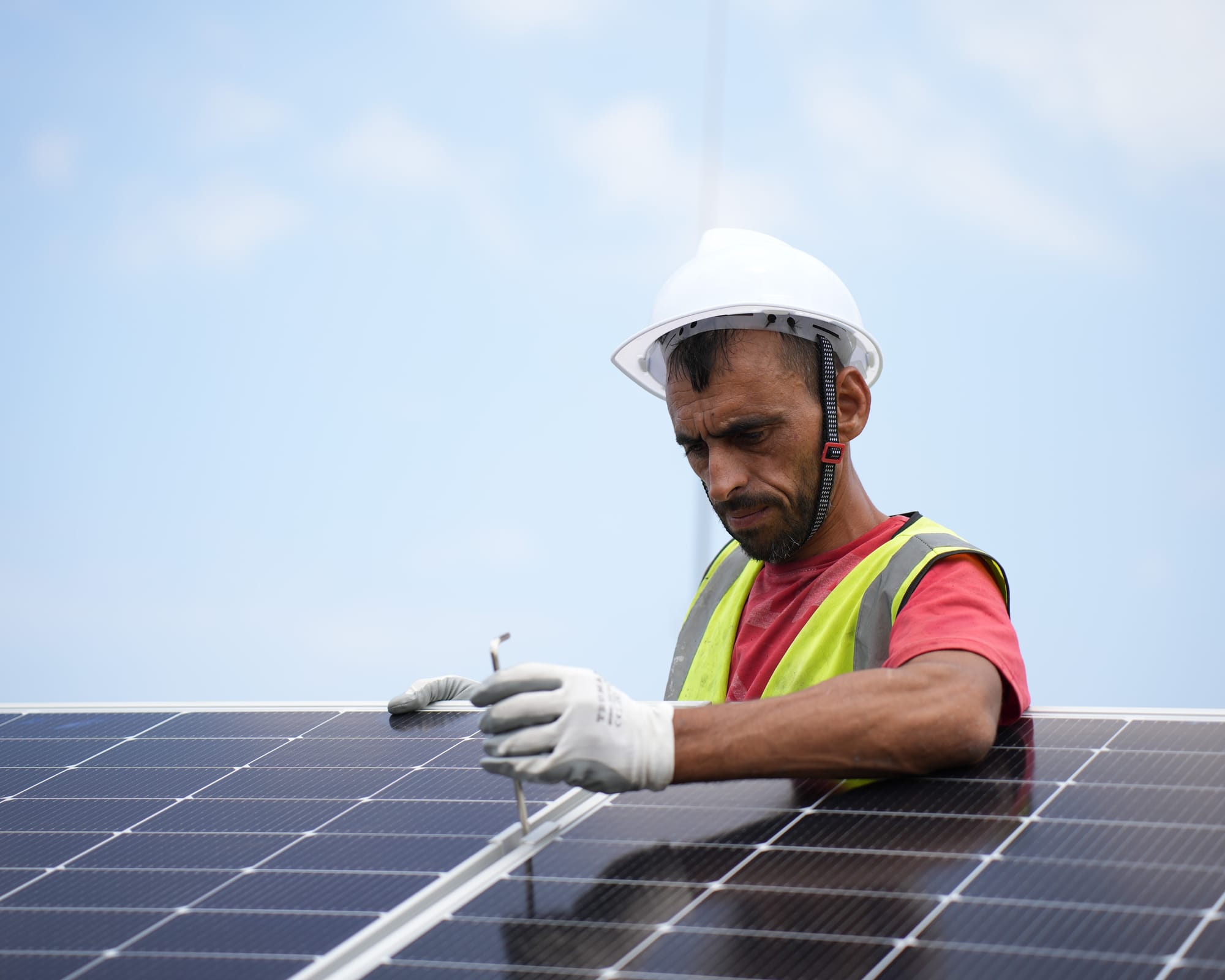Energy transitions are nothing new. Just 200 years ago, whaling was the fifth largest industry in the United States, employing 70,000 workers in providing whale oil for heating and lighting purposes. As whales were hunted to near extinction, Edwin Drake struck oil in Pennsylvania, and the whale oil industry faded away as consumers turned to kerosene—a byproduct of oil—that was cheaper, cleaner, and easier to produce.
Today’s energy transition—from coal, oil, and gas to renewable options such as wind, solar, and green hydrogen—is similar in that it is driven by market forces and technical innovation, but distinct in that it is also driven by governments seeking to reduce greenhouse gas emissions and fight climate change.
One of the crucial factors those governments and policy makers must consider is the energy workforce. In 2019, there were roughly 65 million energy jobs worldwide, according to the International Energy Agency. What happens to the workers and communities displaced by the green energy transition? What kind of workforce do we need if we are to bring about this transition as quickly as possible? And how do we make it as fair as possible?
A panel at the 2024 Society for International Development conference took up these questions with particular reference to the challenges facing emerging and frontier economies—a discussion that yielded four key takeaways. Those challenges are, of course, many and varied, depending on the particular circumstances, history, and natural endowments of the country at hand. Not to mention differing stances on what makes a transition “just.” So it is worth underscoring the well-worn caveat that there is no “one-size-fits-all” solution.
In Sub-Saharan Africa, for example, some 600 million people lack any access to electricity. Their priority is meeting basic energy needs, with a secondary goal of promoting renewable sources. Uganda, for instance, has only recently developed its fossil fuel industry, and despite importing 100 percent of its oil to date, will soon be producing and exporting oil and using the revenue to fund its expansion into clean energy. The needs of the Ugandan workforce, in turn, differ starkly from those in Bosnia and Herzegovina, which has relied on coal for decades, has an aging workforce, and is negotiating to join the European Union, which entails meeting strict EU emissions standards.

Four Takeaways
1. Start with the data
Because each country finds itself in a different phase of energy maturity, it’s important to assess the needs of the country and industry at hand before jumping into training or upskilling workers. We should work with the proponents of new energy development projects, whether in solar, wind, or hydrogen, to understand the local workforce capacity, forecast the investments needed, and develop strategies to meet workforce goals. This process includes planning for different phases of the transition—construction, operations, and maintenance workers will come in waves and could be affected by factors as seemingly mundane as permitting and licensing requirements. A “local content” study is a good place to start (local content is a term usually associated with the multinational oil and gas industry, referring to the degree to which local employees and vendors participate in the economic benefits of a given operation or industry). DAI has conducted numerous local content studies and published lessons learned from oil and gas local content policies and how they could be applied to the renewables sector.
2. Provide realistic training (and realistic financing)
Workforce training should be directly applicable to the new industry needs, and extra support may be necessary to ensure women and disadvantaged groups have access and opportunities. To promote labor mobility, countries should train workers in skills that can be applied more broadly in the economy, such as skills in data science. Wealthy nations have the means to pay for the necessary training; Canada’s Sustainable Jobs Training Fund, for example, allows workers to gain or sharpen skills for jobs in the green economy. In the Global South, we will likely see a combination of government, donors, and the private sector supporting such training. Initiatives such as the Just Energy Transition Partnerships are still being tested but are appealing because they can provide relatively nimble financing by mobilizing funds from wealthier countries, development banks, and development finance agencies.
Providing targeted, realistic training makes good business sense for private sector entities operating in developing countries. At the request of ExxonMobil and its co-venture partners in Guyana, for example, DAI created The Center for Local Business Development in 2017. This initiative helps local businesses become more competitive and enables them to enter the nascent oil and gas sector and related industries. Offering skill-building seminars, business courses, online training, mentoring, and other services, the Center has upskilled more than 4,500 participants from 3,000-plus companies. Topics such as project management, procurement, logistics, and health, safety, security, and environment (HSSE) are applicable across sectors, so this model could easily be adapted to the clean energy industry.
3. Support enabling policies
The best way to attract private sector investment and create jobs in clean energy is to improve the enabling environment—the market conditions necessary for enterprises to thrive. Good governance, infrastructure, financial services, trade policies, digital systems, and so forth will attract the sort of companies that bring jobs or reskilling opportunities to communities. The U.S. Inflation Reduction Act attempts to do this through major financial incentives for companies to improve energy security, transition to renewables, and create good jobs. A related measure, the Justice40 Initiative, addresses environmental justice by requiring federal climate investments to pass 40 percent of benefits to disadvantaged communities. The European Green Deal similarly aims to achieve net zero by 2050—promoting renewables and enhancing efficiency while leaving “no person and no place” behind.
In Vietnam, where solar power is expected to become the primary energy source by 2050, the National Power Development Plan signals the country’s aggressive move toward clean energy and plans to bring power to rural, off-grid places. USAID’s Vietnam Urban Energy and Security project helped create a better enabling environment for this transition by crowdsourcing clean energy innovations and bringing those ideas to fruition with funding, out-of-the-box partnerships, and targeted assistance.
4. Let countries lead
More than 150 countries pledged accelerated climate action at the 2023 United Nations Climate Change Conference (COP 28), but exactly how to operationalize the transition must be driven by individual countries, with donors, implementers, and the private sector supporting them. Community and stakeholder engagement will depend on the country’s power sector maturity but is crucial to ensuring inclusivity. A “successful” just transition might look different too, depending on what is most meaningful to a country. The number of jobs might be less important than the category of job, for example, or the proportion of jobs for women or for disadvantaged populations.

What’s Next?
The global clean energy transition is a huge, complex undertaking. But it also presents a unique opportunity to pivot sustainably and equitably. Globally, renewable energy jobs numbered 13.7 million by 2022, roughly doubling in a decade. In the United States, where the electric power generation sector emits fully a quarter of all U.S. greenhouse gases, clean energy now accounts for 84 percent of new jobs in power generation. Solar and wind alone already represent more than half of all jobs in the electric power generation sector and more than twice the number of jobs found in the oil-, coal-, natural gas-, and advanced natural gas-fueled components of that sector combined.
Countries in the Global South have different challenges but similar opportunities. Governments must lead the way with policies and incentives specific to their needs, which should entail engaging citizens and communities in the inclusion of disadvantaged groups and attention to workforce safeguards. Donors can provide expertise, capacity building, and the catalytic funding needed to explore locally driven solutions. And the private sector will, of course, play a role by investing in clean energy, which will depend on the right kinds of enabling legislation and regulatory environments.
.png)





